| Umělec magazine 2006/1 >> Global Locality | List of all editions. | ||||||||||||
|
|||||||||||||
Global LocalityUmělec magazine 2006/101.01.2006 Magdalena Ujma, Joanna Zielińska | info | en cs |
|||||||||||||
|
9th Istanbul Biennial, Antrepo No. 5, September 16 – October 30, 2005
The ninth Istanbul Biennial was shaped by two curators: Charles Esche and Vasif Kortun. The former is an art critic who used to run the Tramway Gallery in Glasgow and currently serves as director of the Van Abbemuseum in Eindhoven. The latter comes from Turkey but has lived in the United States for a long time; where he was responsible for the Curatorial Studies program at Bard College, New York. Their aims were ambitious: to organize an exhibition that was different from previous ones in Istanbul as well as distancing themselves from the worldwide biennial craze. The idea was to present a work-in-progress, a modest show that reflected on the role of art and present day art exhibitions – what has outstayed it’s welcome, what must be reinterpreted, what should be changed. Usually, such events are driven by celebrities – curators, artists and guests, a cosmopolitan crowd gathered to attend the opening reception— swollen-headed, the guests and organizers indulge in the festivities – very market savvy, but nothing more. The anti-biennial and anti-establishment attitude of the Istanbul event originated with the ideas presented in Esche’s book, Modest Proposals. His main concern seems to question the usefulness of art after the collapse of the avant-garde utopia, as it has become clear that art is not going to change the world, and limiting it to the market does not suffice. Esche wonders in which ways art might regain its meaning for people – at least in part - through expression of their feelings, perhaps, or the creation of values and communities. Only fifty-three artists were invited by its curators to the Biennial – an especially small number, considering it is a biennial. Of these fifty-three artists, most are hardly known. They do not come from any of the world’s artistic centers, but from its fringes – from the Balkans, Arab countries, Kazakhstan – the same cultural sphere as Turkey. The Biennial questions the stardom of its curators as they step aside, making room for the artists. Many of the artists were invited to stay in Istanbul for a few months. Istanbul, once compared to Rome, is still an impressive city, but it is no longer a cultural capital. The Biennial shows the importance and universality of the Western idea of art, even though it is a peripheral event. This idea is taken to its limits. The Istanbul Biennial presents hybrid art, a blend of values, modes of thought and languages. This explains why works using languages other than English have found their way here with no translation, including Phil Collins’ film about participants of Turkish TV talk shows, or Hala Elkoussy’s film about the suburbs of Cairo. A scathing commentary on this trend appeared in Jakup Ferri’s film: An Artist Who Speaks No English Is No Artist. Politics must not be overlooked. Shortly after the Biennial opened, official accession negotiations began between Turkey and the European Union. It would be naive to assume that this was merely coincidental, especially in light of the controversy it raised among member countries. The Biennial might thus be perceived as an attempt to reconstruct the image of the city and to “civilize” it, to show that there is more to Istanbul than just Asian “wilderness.” The main idea of the Biennial is Istanbul itself, but this is merely a pretext for discussing the concept of the city in general. Istanbul becomes a model of the contemporary city and a prototype of the future one. This multicultural agglomeration between Europe and Asia, spreading uncontrollably, turns into a sort of urban anti-utopia and a vision of the future city for Western democracies. To allow art to be successfully integrated with the city of Istanbul, the exhibition’s organizers chose the district of Beyoglu. In Beyoglu one can find everything: bourgeois palaces, an expensive street lined with banks and a upscale mall to poverty-ridden streets and the trade wharf on the Bosporus strait. Individual shows, of which there are seven, are hosted by venues situated along routes that can be taken when walking through the city. This concept is very different from previous years’ when the curators chose locations close to impressive tourist attractions such as Hagia Sophia. Unfortunately, without its usual impressive venue, there is virtually no Biennial in the city. Public projects have turned out a complete failure. They remain unseen, like Pawel Althamer’s projection of the image of the moon on top of a hotel, which exists only in a photograph. The Biennial fails to open to the city, as it hides in alcoves. The modesty, simplicity and usefulness of the Biennial is also evident in its publications. An exhibition guide, filled with brief yet helpful comments and updated photographs, was published instead of a catalog. An additional guidebook was published – a guide to Istanbul by the Turkish artist şener Özmen, who chose to imitate the format of the standard city guide. For this reason, the Biennial is one of the few successful Turkish public projects, since it encourages people to go out into the city, take a look at it and feel it. The Biennial can be analyzed in a variety of ways. Some artists have reconstructed the themes of particular shows. Take Nedko Solakov’s work – brimming with post-Soviet nostalgia – or Michael Blum’s archivist play with history. Both reflect on the concepts of home and private memory, with clear references to the history of the Turkish middle class and intelligentsia. Some venues focus on the concept of the city in general as well as on the analysis of Istanbul. It seems more interesting, however, to trace the themes that keep coming up in the same works or exhibitions. In this way, one discovers a lot of the so-called political art, which refers to the very idea of being political and its sense. The analysis of the media language is there, too. Another theme is the coexistence of people with various cultural backgrounds, and the clash of languages and systems of values. This is illustrated by non-English works that are presented without translation (as mentioned above), such as the work of Iranian artist Y. Z. Kami, who quotes verses by a Sufi poet in his installation, or Wael Shawky’s video showing a man reciting the Koran in a Turkish supermarket. By eliminating English from their art, Turkish artists effectively bar Western people from truly understanding it. Other works display acts of civil disobedience towards the state, or independence from the “global culture” imposed by the market: take the activities of the Indonesian RUANGRUPA, whose T-shirts ridicule the idols of popular culture; Tintin Wulia’s film about predatory developers in Jakarta; Yochai Avrahami’s installation about taxis in Israel; or Sean Snyder’s work on the independent circulation of information which, thanks to the Internet, can escape censorship and thus permit genuine pictures from Iraq to be presented to the world. Nostalgia for simple communities in which street trade still exists and neighbors keep in touch with each other is yet another common theme. The Korean group, Flying City, creates an urban utopia to simplify the life of vendors whose numbers grow ever fewer. In his feature film, Mario Rizzi tells a story of shoemakers who produce and sell shoes in Istanbul. All over the Biennial, the films of Jakup Ferri, a young artist from Kosovo, can be seen. Artists and their works might also be confronted with one another, such as Dan Perjovschi and Ola Pehrson, providing mutual comments. At the Biennial, there is a place for self-reflection and a place for reflection on trends in art, superficial treatment of the theme imposed by the exhibition, which Perjovschi refers to. Fiction created by documentary films, TV news or photographs is the theme of Ola Perhson’s handmade remake of a documentary on the Unabomber. It can also be found in Yaron Leshem’s photograph depicting a fake Palestinian village built by the Israeli army for training purposes, or in the aforementioned photographs collected by Sean Snyder that show Saddam Hussein’s hiding place. Also many works deal with the issue of national identity, including David Malijković’s futuristic tale about Croatia, Yael Bartana’s film about the burden of memory and its haunting effects on the young generation of Israel, and Khalil Rabah’s Palestinian Museum of Natural History and Humankind, where national identity is built upon an olive tree. In the Antrepo no. 5 a large portion of space has been allotted for the art school students and young Turkish artists. It is significant that the unknown and the marginalized have been allowed to have their say in the Biennial. The Turkish exhibition is interesting, often dwelling on the themes of manhood, army, and terror. There is also a program of meetings with the curators of the competitive Nicosia Biennial. That means openness, which, alas, did not attract many followers in the city. Although the Biennial tries to bring openness to Istanbul, the seventeen-million person metropolis continues to ignore it. It is not the tiny Venice, after all, which gets all mobilized for the Biennial. For Venice, the Biennial means the right to live; for Istanbul – hardly so.
01.01.2006
Recommended articles
|
|||||||||||||
|
04.02.2020 10:17
Letošní 50. ročník Art Basel přilákal celkem 93 000 návštěvníků a sběratelů z 80 zemí světa. 290 prémiových galerií představilo umělecká díla od počátku 20. století až po současnost. Hlavní sektor přehlídky, tradičně v prvním patře výstavního prostoru, představil 232 předních galerií z celého světa nabízející umění nejvyšší kvality. Veletrh ukázal vzestupný trend prodeje prostřednictvím galerií jak soukromým sbírkám, tak i institucím. Kromě hlavního veletrhu stály za návštěvu i ty přidružené: Volta, Liste a Photo Basel, k tomu doprovodné programy a výstavy v místních institucích, které kvalitou daleko přesahují hranice města tj. Kunsthalle Basel, Kunstmuseum, Tinguely muzeum nebo Fondation Beyeler.
|







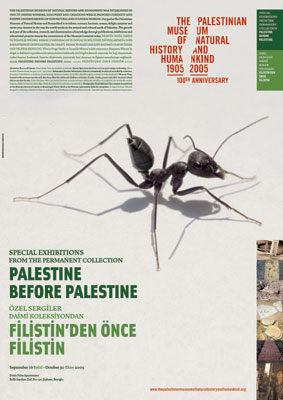
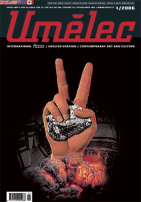









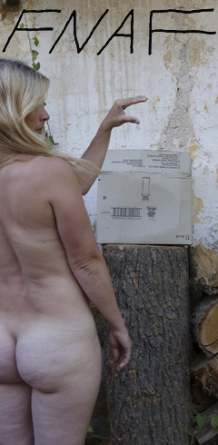











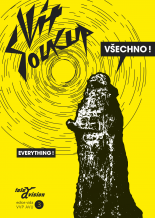

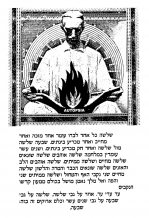
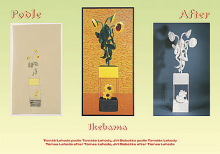


 New book by I.M.Jirous in English at our online bookshop.
New book by I.M.Jirous in English at our online bookshop.
Comments
There are currently no comments.Add new comment